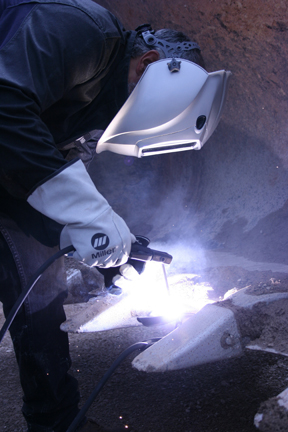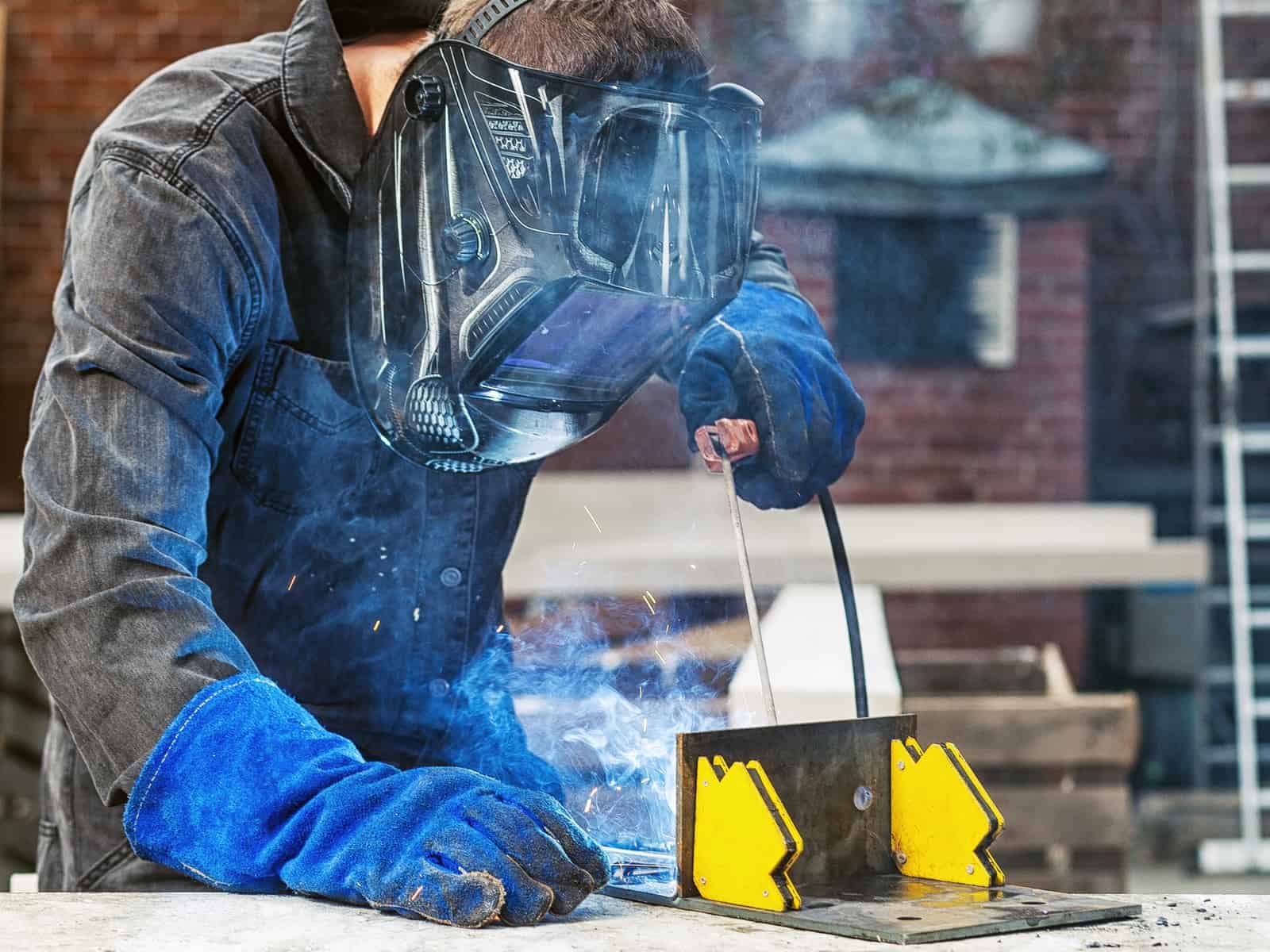Typical Welding Repair Issues and Just How to Address Them Properly
Welding fixings frequently run into a variety of problems that can jeopardize the integrity of the end product. Common troubles consist of inadequate infiltration, porosity, and imbalance, to name a few. Each defect offers unique challenges that call for specific techniques for resolution. Recognizing these problems is vital for welders aiming to enhance their skills and results. This discussion will certainly check out these common welding fixing concerns and effective techniques to address them.
Insufficient Infiltration
Poor infiltration occurs when the weld steel fails to fully fuse with the base material, resulting in weak joints and potential structural failures. This problem frequently stems from insufficient warmth input, wrong electrode angle, or improper welding rate. Welders might come across poor infiltration as a result of a miscalculation of the necessary specifications for a particular material thickness or type. Furthermore, contamination on the base product's surface area can prevent efficient bonding, aggravating the problem. To attend to poor penetration, welders need to assure appropriate setups on their tools and keep a tidy job surface. Normal inspection of welds is suggested to determine any deficiencies early, permitting for prompt corrections and the avoidance of jeopardized structural integrity in welded settings up.
Porosity
Porosity is a typical flaw in bonded joints that materializes as small gas bubbles trapped within the weld steel. This flaw can endanger the stability of the weld, leading to lowered toughness and prospective failure under anxiety. Montana Mobile Welding and Repair Fabrication. Porosity commonly arises from contamination, wetness, or inappropriate welding methods, which enable gases to get away into the molten weld swimming pool. To deal with porosity, welders need to assure appropriate surface prep work, maintain a clean workplace, and make use of ideal welding criteria. Furthermore, selecting the best filler product and protecting gas can reduce gas entrapment. Routine evaluation and screening of welds can help recognize porosity early, guaranteeing prompt rehabilitative actions are taken, therefore preserving the top quality and integrity of the bonded framework
Imbalance
Imbalance in welding can arise from various factors, including improper configuration and thermal development. Comprehending the source is crucial for reliable resolution. A number of modification methods are offered to realign components and assure structural stability.
Causes of Imbalance
Welding misalignment typically comes from a selection of underlying concerns that can endanger structural integrity. One primary reason is incorrect fit-up of parts prior to welding, which can lead to voids and irregular surfaces. Variants in thermal expansion throughout the welding process can likewise result in distortion, especially if the products being joined have various coefficients of growth. Furthermore, poor fixturing and clamping might fall short to hold components firmly in location, causing motion throughout welding. Badly conserved devices, consisting of welding devices and devices, may present disparities in the weld grain, further adding to misalignment. Finally, driver error, originating from inadequate training or experience, can additionally play a considerable duty in producing misaligned welds.
Modification Methods Readily Available
Attending to imbalance effectively calls for a mix of corrective techniques customized to the particular issues available. One common method is using components or jigs to hold parts in the right position during welding, ensuring consistent alignment. In addition, pre-heating the materials can help reduce distortion and improve fit-up. For substantial misalignment, mechanical adjustment methods, such as using hydraulic jacks or clamps, can be utilized to remedy the position before welding. Post-weld warm treatment might likewise be essential to soothe anxieties triggered by misalignment. Mindful evaluation and adjustment throughout the configuration stage can stop misalignment issues from ending up being considerable problems, promoting a smoother welding procedure and enhancing total architectural stability.
Distortion
Distortion is a common difficulty in welding that can arise from various elements, consisting of irregular heating and cooling. Recognizing the reasons for distortion is vital for implementing effective prevention methods. Resolving this concern not just improves architectural integrity however also enhances the overall quality of the weld.
Root causes of Distortion
When based on the extreme warm of welding, materials frequently go through modifications that can lead to distortion. This sensation largely develops from thermal development and contraction during the welding procedure. As the weld area warms up, the material expands; upon cooling, it acquires, which can develop inner stresses. In enhancement, unequal home heating throughout a work surface can aggravate these anxieties, causing bending or bending. The type of material additionally plays a significant role; metals with varying thermal conductivity and coefficients of expansion may react in a different way, bring about uncertain distortions. Bad joint style and inadequate fixturing can add to imbalance during welding, increasing the possibility of distortion. Recognizing these reasons is crucial for efficient welding repair service and avoidance techniques.
Prevention Techniques
Effective avoidance methods for distortion throughout welding concentrate on controlling heat input and guaranteeing proper joint design. Preserving a consistent warm input aids to decrease thermal growth and tightening, which can result in distortion. Utilizing methods such as pre-heating the workpiece can likewise lower the temperature gradient, promoting consistent heating. Furthermore, picking proper joint designs, such as T-joints or lap joints, can improve stability and lower anxiety focus. Carrying out appropriate fixturing to secure the work surfaces in position additionally aids in preserving alignment throughout the welding process. Staggered welding series can distribute warmth more evenly, preventing local distortion. By using these strategies, welders can greatly decrease the probability of distortion and enhance the total high quality of their welds.
Breaking
Fracturing is a typical issue experienced in welding fixings, commonly arising from various variables such as improper cooling rates, product option, or inadequate joint prep work. The event of splits can considerably compromise the integrity of the weld, causing possible failings throughout procedure. To address this problem, welders visit homepage must first examine the origin, guaranteeing that products work and properly chosen for the particular application. Furthermore, managing the cooling rate throughout the welding procedure is vital; fast air conditioning can generate stress and bring about breaking. Appropriate joint layout and prep work also add to decreasing the danger. Applying these techniques can boost weld top quality and sturdiness, inevitably reducing the probability of breaking in finished weldments.

Insufficient Blend
A substantial issue in welding fixings is incomplete combination, which takes place when the weld steel does not sufficiently bond with the base product or previous weld passes - Belgrade Welding. This issue can result in weak points in the joint, potentially compromising the honesty of the welded structure. Aspects adding to incomplete combination consist of insufficient heat input, improper welding strategy, and contamination of the surfaces being signed up with. To address this issue efficiently, welders must assure correct pre-weld cleaning and surface area preparation, as well as readjust their welding specifications to achieve appropriate infiltration and blend. Regular inspection during the welding procedure can also assist identify insufficient combination early, enabling prompt restorative measures to boost the general quality of the weld
Overheating
While welding fixings can improve structural integrity, overheating presents a significant challenge that can bring about material destruction. Extreme heat throughout welding can modify the mechanical buildings of steels, causing reduced strength, increased brittleness, and warping. This sensation is particularly crucial in high-stress applications where structural reliability is vital. Recognizing overheating can entail visual evaluations for staining or distortion, in addition to keeping track of temperature level during the welding process. To minimize the threats associated with overheating, welders need to see it here employ appropriate strategies, such as regulating warm input, adjusting traveling speed, and utilizing ideal filler products. Furthermore, applying pre- and post-weld warm treatments can assist recover material residential properties and improve the overall top quality of the repair service, guaranteeing long-term efficiency and security.
Frequently Asked Inquiries
What Are the Common Indicators of a Welding Issue?

Exactly How Can I Test My Welds for Top quality?
To check welds for quality, one can utilize visual inspections, ultrasonic testing, and radiographic methods. Each strategy guarantees structural honesty, recognizes defects, and confirms adherence to specified standards, ultimately enhancing the reliability of the welded joints.
What Safety Safety Measures Should I Take While Welding?
When welding, one must focus on safety and security by putting on proper personal safety devices, making certain proper air flow, securing combustible materials away, maintaining a tidy workspace, and knowing environments to avoid injuries and crashes.
Can I Repair a Weld Without Redoing the Entire Joint?
Fixing a weld without remodeling the whole joint is feasible, depending on the damage (Fabrication). Strategies such as grinding, adding filler product, or making use of a welding process can effectively deal with specific flaws while preserving the bordering structure
What Devices Are Essential for Reliable Welding Repair Works?
Important tools for effective welding repair services consist of a welding device, cord brush, grinder, safety gear, clamps, and filler materials. Each device plays an essential duty in ensuring top quality and safety and security during the fixing process. Porosity commonly arises from contamination, wetness, or inappropriate welding techniques, which enable gases to escape into the liquified weld pool. Improperly kept equipment, consisting of welding makers and tools, may introduce disparities in the weld grain, more adding to imbalance. When subjected to the intense heat of welding, products typically go through changes that can lead to distortion. Splitting is a common problem encountered in welding fixings, often resulting from various factors such as incorrect air conditioning prices, product choice, or poor joint prep work. A considerable concern in welding repair services is hop over to here incomplete blend, which happens when the weld metal does not properly bond with the base material or previous weld passes.
Comments on “Troubleshooting plan for weld distortion by Belgrade Fabrication”